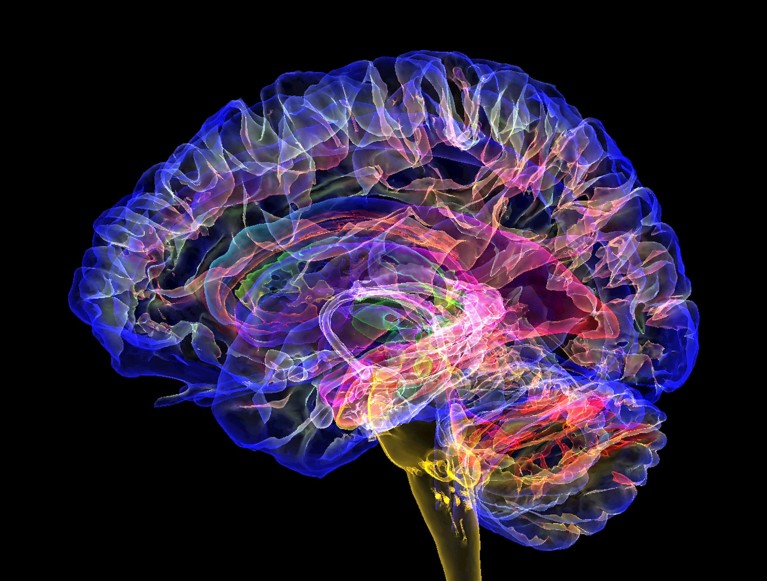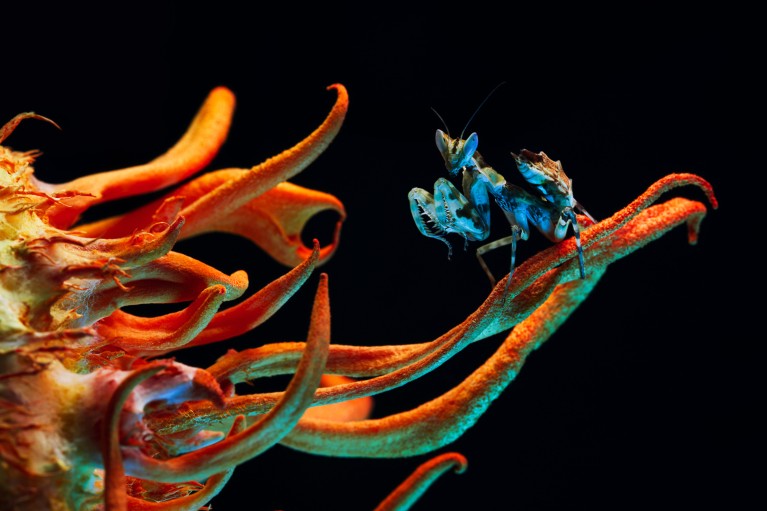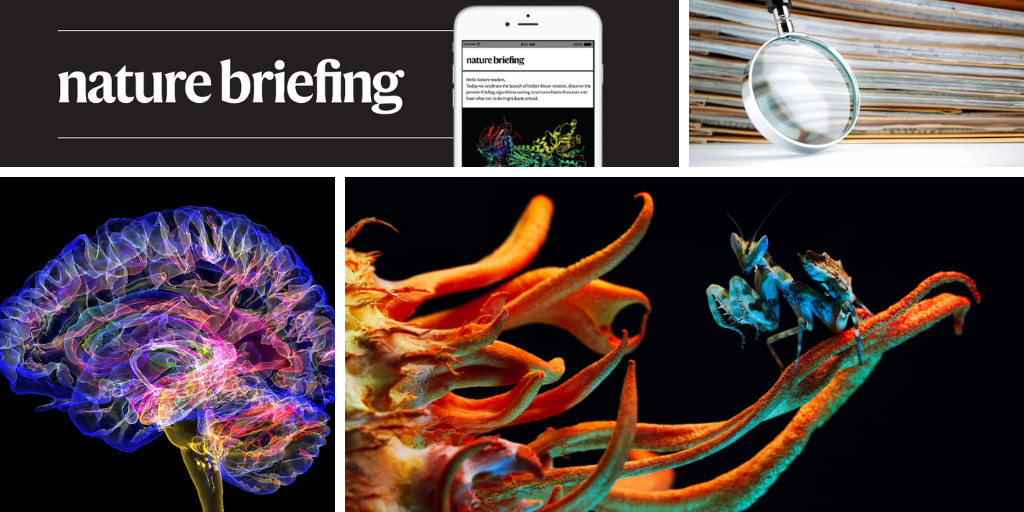You have full access to this article via your institution.
Hello Nature readers, would you like to get this Briefing in your inbox free every day? Sign up here.

The inner structures of the brain are difficult to investigate without surgery.Credit: K H Fung/Science Photo Library
Neuroscientists have observed for the first time how structures deep in the brain are activated when the brain becomes aware of its own thoughts. People who had thin electrodes injected deep into their brains as part of a treatment for headaches allowed scientists to study their brain signals and measure conscious awareness. The study found that a deep-brain structure called the thalamus filters which thoughts we become aware of and which we don’t.
The journal Bioengineered, which was inundated with paper-mill submissions in 2021 — and claimed in 2023 that it had tackled the problem — still harbours hundreds of dubious papers. An analysis by research-integrity sleuths found at least 226 studies on rodents contain copy-and-pasted images and other hallmarks of paper mills. Publisher Taylor & Francis says that it is investigating.
Reference: arXiv preprint (not peer reviewed)
Features & opinion
“The race for critical minerals, and its many side effects, illustrates how the struggle to provide public goods to the global market must restart at the local level,” argues economist Rabah Arezki. The push by big economies to secure their own supplies is incentivizing environmental damage and contributing to conflicts, displacement and the use of child labour in the countries where mining is done. “A balance must be struck so that countries rich in critical minerals get their fair share of revenues from extraction by multinational corporations,” writes Arezki. “That starts with transparent mining contracts and by strengthening local governments’ capacities to negotiate fair deals.”
“Unicorn slippers in space takes the story of Hamlet, smooshes it into flash form with abundant liberties, and rockets Hamlet to space wearing plush unicorn slippers,” says author Katie Cervenec of the latest short story for Nature’s Futures series.
Researchers have developed a prototype pacemaker that fits inside a syringe and dissolves when no longer needed. It requires no external power and is controlled using light shone through the skin. The tiny pacemaker has shown promise in animal and heart models, and the team think it could also be used in other situations where electrical stimulation is needed, such as in the brain.
Nature Podcast | 37 min listen
Subscribe to the Nature Podcast on Apple Podcasts, Spotify or YouTube Music, or use the RSS feed.
Image of the week

Credit: Irina Petrova Adamatzky/World Nature Photography Awards
This eerie but vibrant snap shows a flower mantis (Creobroter sp.) perched on top of the strange fruiting body of a Cordyceps fungus. In daylight, this insect is usually green, but wildlife photographer Irina Petrova Adamatzky used strategically placed coloured lights to accentuate its otherworldly appearance and that of the fungus. The shot won a bronze award in the 2025 World Nature Photography Awards. (Nature | Leisurely scroll)
See a selection of other winning entries and more of the month’s sharpest science shots, selected by Nature’s photo team. (Irina Petrova Adamatzky/World Nature Photography Awards)
This week our penguin-seeking puzzle brings us to the stunning moss-covered banks of Coal Creek in the Coeur d’ Alene National Forest in Idaho. Can you find Leif Penguinson?
The answer will be in Monday’s e-mail, all thanks to Briefing photo editor and penguin wrangler Tom Houghton.
This newsletter is always evolving — tell us what you think! Please send your feedback to [email protected].
Thanks for reading,
Flora Graham, senior editor, Nature Briefing
Want more? Sign up to our other free Nature Briefing newsletters:
• Nature Briefing: Careers — insights, advice and award-winning journalism to help you optimize your working life
• Nature Briefing: Microbiology — the most abundant living entities on our planet — microorganisms — and the role they play in health, the environment and food systems
• Nature Briefing: Anthropocene — climate change, biodiversity, sustainability and geoengineering
• Nature Briefing: AI & Robotics — 100% written by humans, of course
• Nature Briefing: Cancer — a weekly newsletter written with cancer researchers in mind
• Nature Briefing: Translational Research — covers biotechnology, drug discovery and pharma


